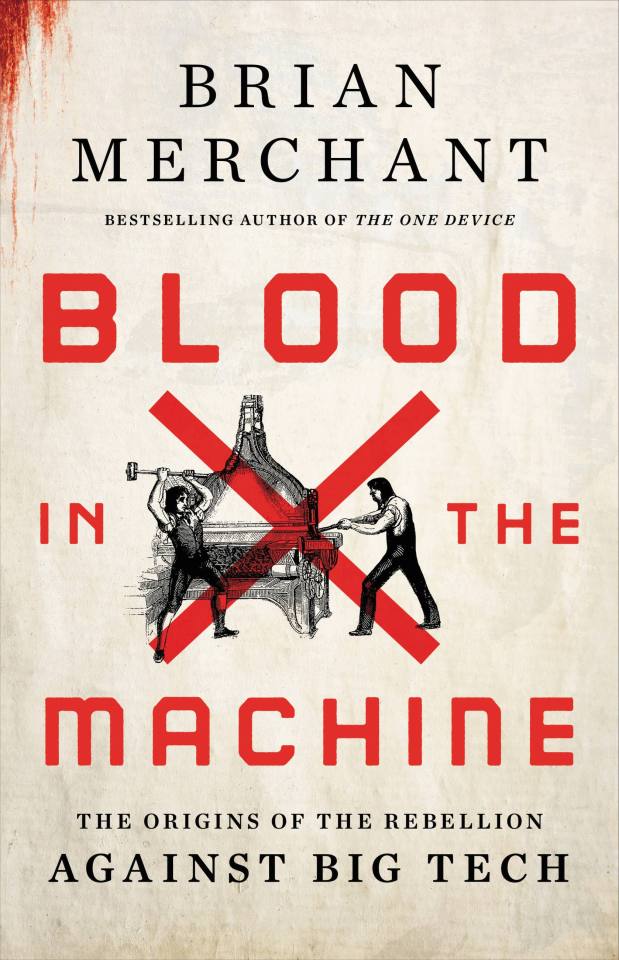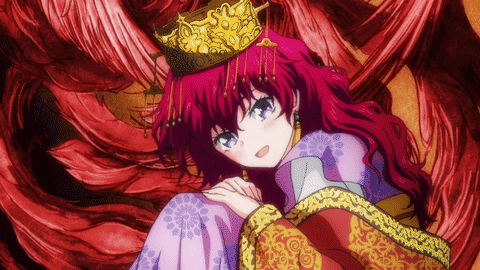#industry versus inferiority
Explore tagged Tumblr posts
Text
Writing Notes: Life Cycle

Erik Erikson’s 8 stages of the life cycle
Normative Crisis — Age — Major Characteristics
Trust vs. Mistrust — 0 to 1 — Primary social interaction with mothering caretaker; oral concerns; trust or mistrust in life-sustaining care, including feeding.
Autonomy vs. Shame and Doubt — 1 to 2 — Primary social interaction with parents; toilet training; beginnings of autonomous will.
Initiative vs. Guilt — 3 to 5 — Primary social interaction with nuclear family; beginnings of oedipal feelings; development of conscience to govern initiative.
Industry vs. Inferiority — 6 to puberty — Primary social interaction outside home among peers and teachers; school-age assessment of task ability.
Identity vs. Role Confusion — Adolescence — Primary social interaction with peers, culminating in heterosexual friendship; psychological moratorium from adult commitments; identity crisis; consolidation of resolutions of previous 4 stages into coherent sense of self.
Intimacy vs. Isolation — Early adulthood — Primary social interaction in intimate relationship (usually opposite sex); adult role commitments accepted, including commitment to another person.
Generativity vs. Stagnation — Middle adulthood — Primary social concern in establishing and guiding succeeding generation; productivity and creativity.
Ego Integrity vs. Despair — Late adulthood — Primary social concern is reflective: coming to terms with one’s place in the nearly complete life cycle, and with one’s relationships with others.
Erikson’s theory is called a psycho-self-reflexive, contextual process of finding and making meaning in the world.
It is not in conflict with scientific knowledge because, on the hermeneutic account, all psychological knowledge is concerned with this sort of understanding of our world (Verstehen), and not about explaining the universal laws of nature.
His theory charted changes in personality over the entire life cycle, rather than focusing on the early childhood years as critical to all later personality functioning.
Erikson proposed 8 stages of human development, each with its own normative crisis, by which he meant not a debilitating conflict, but rather a period of heightened vulnerability and potential.
He viewed human development as occurring in orderly stages, each with its own special characteristics and its own particular age relationship.
The stages always occur in a particular order and cannot be skipped.
His stages illustrate what Erikson termed the epigenetic principle.
Briefly stated, this principle proposes that critical elements of human personality have a ground plan from which they grow, similar to the physical growth principle by which the undifferentiated cells of embryos develop in orderly ways into organ systems. Thus, all human beings will face the normative crisis of trust versus mistrust in the period of infancy.
The resolution of this crisis leaves the infant with an abiding sense of either trust or mistrust that will become part of later personality functioning.
Each stage builds upon what has gone before and carries elements of itself into future stages.
Erikson’s contributions to psychology, particularly to the study of personality, can be divided into 4 major areas:
His emphasis on the importance of the entire life cycle in personality change
The psychosocial origins of personality
The centrality of self-identity in personality development
The importance of life histories for personality study
Source: Hopkins (1983, p. 74), adapted from Erikson (1968) ⚜ Psychology
#writing notes#psychology#writeblr#spilled ink#character development#dark academia#writing reference#literature#light academia#creative writing#novel#fiction#writers on tumblr#writing prompt#character building#poets on tumblr#poetry#writing prompts#claude monet#writing resources
97 notes
·
View notes
Text
Brian Merchant’s “Blood In the Machine”

Tomorrow (September 27), I'll be at Chevalier's Books in Los Angeles with Brian Merchant for a joint launch for my new book The Internet Con and his new book, Blood in the Machine. On October 2, I'll be in Boise to host an event with VE Schwab.

In Blood In the Machine, Brian Merchant delivers the definitive history of the Luddites, and the clearest analysis of the automator's playbook, where "entrepreneurs'" lawless extraction from workers is called "innovation" and "inevitable":
https://www.littlebrown.com/titles/brian-merchant/blood-in-the-machine/9780316487740/
History is written by the winners, and so you probably think of the Luddites as brainless, terrified, thick-fingered vandals who smashed machines and burned factories because they didn't understand them. Today, "Luddite" is a slur that means "technophobe" – but that's neither fair, nor accurate.
Luddism has been steadily creeping into pro-labor technological criticism, as workers and technology critics reclaim the term and its history, which is a rich and powerful tale of greed versus solidarity, slavery versus freedom.
The true tale of the Luddites starts with workers demanding that the laws be upheld. When factory owners began to buy automation systems for textile production, they did so in violation of laws that required collaboration with existing craft guilds – laws designed to ensure that automation was phased in gradually, with accommodations for displaced workers. These laws also protected the public, with the guilds evaluating the quality of cloth produced on the machine, acting as a proxy for buyers who might otherwise be tricked into buying inferior goods.
Factory owners flouted these laws. Though the machines made cloth that was less durable and of inferior weave, they sold it to consumers as though it were as good as the guild-made textiles. Factory owners made quiet deals with orphanages to send them very young children who were enslaved to work in their factories, where they were routinely maimed and killed by the new machines. Children who balked at the long hours or attempted escape were viciously beaten (the memoir of one former child slave became a bestseller and inspired Oliver Twist).
The craft guilds begged Parliament to act. They sent delegations, wrote petitions, even got Members of Parliament to draft legislation ordering enforcement of existing laws. Instead, Parliament passed laws criminalizing labor organizing.
The stakes were high. Economic malaise and war had driven up the price of life's essentials. Workers displaced by illegal machines faced starvation – as did their children. Communities were shattered. Workers who had apprenticed for years found themselves graduating into a market that had no jobs for them.
This is the context in which the Luddite uprisings began. Secret cells of workers, working with discipline and tight organization, warned factory owners to uphold the law. They sent letters and posted handbills in which they styled themselves as the army of "King Ludd" or "General Ludd" – Ned Ludd being a mythical figure who had fought back against an abusive boss.
When factory owners ignored these warnings, the Luddites smashed their machines, breaking into factories or intercepting machines en route from the blacksmith shops where they'd been created. They won key victories, with many factory owners backing off from automation plans, but the owners were deep-pocketed and determined.
The ruling Tories had no sympathy for the workers and no interest in upholding the law or punishing the factory owners for violating it. Instead, they dispatched troops to the factory towns, escalating the use of force until England's industrial centers were occupied by literal armies of soldiers. Soldiers who balked at turning their guns on Luddites were publicly flogged to death.
I got very interested in the Luddites in late 2021, when it became clear that everything I thought I knew about the Luddites was wrong. The Luddites weren't anti-technology – rather, they were doing the same thing a science fiction writer does: asking not just what a new technology does, but also who it does it for and who it does it to:
https://locusmag.com/2022/01/cory-doctorow-science-fiction-is-a-luddite-literature/
Unsurprisingly, ever since I started publishing on this subject, I've run into people who have no sympathy for the Luddite cause and who slide into my replies to replicate the 19th Century automation debate. One such person accused the Luddites of using "state violence" to suppress progress.
You couldn't ask for a more perfect example of how the history of the Luddites has been forgotten and replaced with a deliberately misleading account. The "state violence" of the Luddite uprising was entirely on one side. Parliament, under the lackadaisical leadership of "Mad King George," imposed the death penalty on the Luddites. It wasn't just machine-breaking that became a capital crime – "oath taking" (swearing loyalty to the Luddites) also carried the death penalties.
As the Luddites fought on against increasingly well-armed factory owners (one owner bought a cannon to use on workers who threatened his machines), they were subjected to spectacular acts of true state violence. Occupying soldiers rounded up Luddites and suspected Luddites and staged public mass executions, hanging them by the dozen, creating scores widows and fatherless children.
The sf writer Steven Brust says that the test to tell whether someone is on the right or the left is simple: ask whether property rights are more important than human rights. If the person says "property rights are human rights," they are on the right.
The state response to the Luddites crisply illustrates this distinction. The Luddites wanted an orderly and lawful transition to automation, one that brought workers along and created shared prosperity and quality goods. The craft guilds took pride in their products, and saw themselves as guardians of their industry. They were accustomed to enjoying a high degree of bargaining power and autonomy, working from small craft workshops in their homes, which allowed them to set their own work pace, eat with their families, and enjoy modest amounts of leisure.
The factory owners' cause wasn't just increased production – it was increased power. They wanted a workforce that would dance to their tune, work longer hours for less pay. They wanted unilateral control over which products they made and what corners they cut in making those products. They wanted to enrich themselves, even if that meant that thousands starved and their factory floors ran red with the blood of dismembered children.
The Luddites destroyed machines. The factory owners killed Luddites, shooting them at the factory gates, or rounding them up for mass executions. Parliament deputized owners to act as extensions of law enforcement, allowing them to drag suspected Luddites to their own private cells for questioning.
The Luddites viewed property rights as just one instrument for achieving human rights – freedom from hunger and cold – and when property rights conflicted with human rights, they didn't hesitate to smash the machines. For them, human rights trumped property rights.
Their bosses – and their bosses' modern defenders – saw the demands to uphold the laws on automation as demands to bring "state violence" to bear on the wholly private matter of how a rich man should organize his business. On the other hand, literal killing – both on the factory floor and at the gallows – was not "state violence" but rather, a defense of the most important of all the human rights: the rights of property owners.
19th century textile factories were the original Big Tech, and the rhetoric of the factory owners echoes down the ages. When tech barons like Peter Thiel say that "freedom is incompatible with democracy," he means that letting people who work for a living vote will eventually lead to limitations on people who own things for a living, like him.
Then, as now, resistance to Big Tech enjoyed widespread support. The Luddites couldn't have organized in their thousands if their neighbors didn't have their backs. Shelley and Byron wrote widely reproduced paeans to worker uprisings (Byron also defended the Luddites in the House of Lords). The Brontes wrote Luddite novels. Mary Shelley's Frankenstein was a Luddite novel, in which the monster was a sensitive, intelligent creature who merely demanded a say in the technology that created him.
The erasure of the true history of the Luddites was a deliberate act. Despite the popular and elite support the Luddites enjoyed, the owners and their allies in Parliament were able to crush the uprising, using mass murder and imprisonment to force workers to accept immiseration.
The entire supply chain of the textile revolution was soaked in blood. Merchant devotes multiple chapters to the lives of African slaves in America who produced the cotton that the machines in England wove into cloth. Then – as now – automation served to obscure the violence latent in production of finished goods.
But, as Merchant writes, the Luddites didn't lose outright. Historians who study the uprisings record that the places where the Luddites fought most fiercely were the places where automation came most slowly and workers enjoyed the longest shared prosperity.
The motto of Magpie Killjoy's seminal Steampunk Magazine was: "Love the machine, hate the factory." The workers of the Luddite uprising were skilled technologists themselves.
They performed highly technical tasks to produce extremely high-quality goods. They served in craft workshops and controlled their own time.
The factory increased production, but at the cost of autonomy. Factories and their progeny, like assembly lines, made it possible to make more goods (even goods that eventually rose the quality of the craft goods they replaced), but at the cost of human autonomy. Taylorism and other efficiency cults ended up scripting the motions of workers down to the fingertips, and workers were and are subject to increasing surveillance and discipline from their bosses if they deviate. Take too many pee breaks at the Amazon warehouse and you will be marked down for "time off-task."
Steampunk is a dream of craft production at factory scale: in steampunk fantasies, the worker is a solitary genius who can produce high-tech finished goods in their own laboratory. Steampunk has no "dark, satanic mills," no blood in the factory. It's no coincidence that steampunk gained popularity at the same time as the maker movement, in which individual workers use form digital communities. Makers networked together to provide advice and support in craft projects that turn out the kind of technologically sophisticated goods that we associate with vast, heavily-capitalized assembly lines.
But workers are losing autonomy, not gaining it. The steampunk dream is of a world where we get the benefits of factory production with the life of a craft producer. The gig economy has delivered its opposite: craft workers – Uber drivers, casualized doctors and dog-walkers – who are as surveilled and controlled as factory workers.
Gig workers are dispatched by apps, their faces closely studied by cameras for unauthorized eye-movements, their pay changed from moment to moment by an algorithm that docks them for any infraction. They are "reverse centaurs": workers fused to machines where the machine provides the intelligence and the human does its bidding:
https://pluralistic.net/2021/02/17/reverse-centaur/#reverse-centaur
Craft workers in home workshops are told that they're their own bosses, but in reality they are constantly monitored by bossware that watches out of their computers' cameras and listens through its mic. They have to pay for the privilege of working for their bosses, and pay to quit. If their children make so much as a peep, they can lose their jobs. They don't work from home – they live at work:
https://pluralistic.net/2021/01/22/paperback-writer/#toothless
Merchant is a master storyteller and a dedicated researcher. The story he weaves in Blood In the Machine is as gripping as any Propublica deep-dive into the miserable working conditions of today's gig economy. Drawing on primary sources and scholarship, Blood is a kind of Nomadland for Luddites.
Today, Merchant is the technology critic for the LA Times. The final chapters of Blood brings the Luddites into the present day, finding parallels in the labor organizing of the Amazon warehouse workers led by Chris Smalls. The liberal reformers who offered patronizing support to the Luddites – but didn't imagine that they could be masters of their own destiny – are echoed in the rhetoric of Andrew Yang.
And of course, the factory owners' rhetoric is easily transposed to the modern tech baron. Then, as now, we're told that all automation is "progress," that regulatory evasion (Uber's unlicensed taxis, Airbnb's unlicensed hotel rooms, Ring's unregulated surveillance, Tesla's unregulated autopilot) is "innovation." Most of all, we're told that every one of these innovations must exist, that there is no way to stop it, because technology is an autonomous force that is independent of human agency. "There is no alternative" – the rallying cry of Margaret Thatcher – has become our inevitablist catechism.
Squeezing the workers' wages conditions and weakening workers' bargaining power isn't "innovation." It's an old, old story, as old as the factory owners who replaced skilled workers with terrified orphans, sending out for more when a child fell into a machine. Then, as now, this was called "job creation."
Then, as now, there was no way to progress as a worker: no matter how skilled and diligent an Uber driver is, they can't buy their medallion and truly become their own boss, getting a say in their working conditions. They certainly can't hope to rise from a blue-collar job on the streets to a white-collar job in the Uber offices.
Then, as now, a worker was hired by the day, not by the year, and might find themselves with no work the next day, depending on the whim of a factory owner or an algorithm.
As Merchant writes: robots aren't coming for your job; bosses are. The dream of a "dark factory," a "fully automated" Tesla production line, is the dream of a boss who doesn't have to answer to workers, who can press a button and manifest their will, without negotiating with mere workers. The point isn't just to reduce the wage-bill for a finished good – it's to reduce the "friction" of having to care about others and take their needs into account.
Luddites are not – and have never been – anti-technology. Rather, they are pro-human, and see production as a means to an end: broadly shared prosperity. The automation project says it's about replacing humans with machines, but over and over again – in machine learning, in "contactless" delivery, in on-demand workforces – the goal is to turn humans into machines.
There is blood in the machine, Merchant tells us, whether its humans being torn apart by a machine, or humans being transformed into machines.
Brian and I are having a joint book-launch tomorrow night (Sept 27) at Chevalier's Books in Los Angeles for my new book The Internet Con and his new book, Blood in the Machine:
https://www.eventbrite.com/e/the-internet-con-by-cory-doctorow-blood-in-the-machine-by-brian-merchant-tickets-696349940417



If you'd like an essay-formatted version of this post to read or share, here's a link to it on pluralistic.net, my surveillance-free, ad-free, tracker-free blog:
https://pluralistic.net/2023/09/26/enochs-hammer/#thats-fronkonsteen
#pluralistic#books#reviews#brian merchant#luddism#automation#history#gift guide#steampunk#makers#tina#inevitablism#reverse centaurs#amazon#arise
548 notes
·
View notes
Text
fanfiction being bad is actually a good thing
sorry that one post has just put me into a musing mood abt like. the way people respond to "bad writing" in fanfiction. so i have written a little essay xx
anyway. first off, any measure of "bad writing" is going to be inherently subjective, whether or not people want to acknowledge that. no matter what critera you use to try and claim that ur measure is more "objective," you will still be able to find published fiction that does not meet those criteria, which is part of the reason that i think it is ridiculous in the first place to act as though "book" and "fanfiction" are two diametrically opposed categories of literature in which "book" = good writing and "fanfiction" = bad writing such that the only way to express a book is bad is to claim it's "more like fanfiction than a book" and the only way to elevate fanfiction is to claim that it's "more like a book than fanfiction." and of course there are all the underlying issues with classism racism ableism etc when buying into the myth of the meritocracy of publishing.
but even acknowledging that any measure of "bad writing" is going to be subjective, i don't think it's unfair to cultivate your own standards for what makes writing good versus bad. everyone is going to do that anyway, so what's more important to me is that a person understands what factors are influencing their measurement and acknowledges the subjectivity inherent to this sort of critique. and i do think, generally speaking, that media which exists within a profit economy is fair game for critique as to whether it is "good" or "bad," as i have talked about before on my blog. and i think depending on what criteria you are using to define bad, there will be instances where it makes more or less sense to make normative judgments about the popularity of such media. for example--if someone says "marvel movies shouldn't [normative judgment] be so popular because the writing is cringey," i find that a less compelling argument than "marvel movies shouldn't be so popular because they are military propaganda."
but i don't think that sort of critique about whether writing is "good" or "bad" has a place in fanfiction spaces. aside from the fact that fanfiction exists primarily outside of any profit economy, the reason that you will likely encounter more "bad" writing in fanfiction is that it's a space where many people are actively learning how to write--and that's a good thing. the only way for someone to become a good writer is to do a lot of bad writing first, so i actually think it's great that there's a bunch of shitty fanfiction out there on the internet--every bad fic u come across is a developing writer who's honing their craft, and they've found a perfect space to do so.
and yet i see "bad writing" get brought up a lot regarding fanfiction in two specific ways.
1. the idea outlined above, where people devalue fanfiction as a whole and act as though "fanfiction" is synonymous with "bad writing" or somehow an inferior medium.
i see this happening both with people who scoff at fanfiction and with people who try to redeem or elevate fanfiction by placing it in closer proximity to published books (i.e., THIS fic isn't like those other, shitty fics! this one is as good as [insert classic novel/published author/etc here]!!").
quite frankly i think this is evidence that these people have bought wholeheartedly into the publishing industry's myth of meritocracy, something that we should seriously question. but if anything, i also find it sad because i think it is a very limiting way to view fanfiction, which is its own unique art form in my opinion. fanfiction has its own conventions and strengths independent of published fiction, and there are many stylistic and structural elements unique to fanfiction that just don't really work in published books. for example--those 15k oneshots you'll come across every so often with lowercase song titles and prose that kicks your teeth in. that is a style of writing that is pretty unique to fanfic. or those sprawling, 400k+ works where tons of time is spent meandering through characters' lives and relationships--those, too, are somewhat unique to fanfiction, as in published books stories tend to get pared down more. i think those who want to convince people that fanfiction is good should spend less time trying to place it in proximity to published fiction and more time considering how fanfiction functions as a unique art form that is worthy of merit thanks to its uniquity
2. people who throw a fit when they see a fanfic with "bad writing" get attention and praise. usually i see this happen if a fic gets some measure of popularity--suddenly, people will begin to pop up talking about how the fic has "bad writing," and therefore shouldn't be popular.
i think that what gets me with these folks, aside from how obviously their own subjectivity regarding what makes writing good or bad has gone unexamined, is how....vindictive they seem. as if the idea that something they deem "bad" writing could ever be widely enjoyed is personally offensive to them. and i just think this sort of behavior is so stupid for two reasons--first, of course, there is the obvious issue of subjectivity. even if you think something is badly written, your opinion isn't somehow more important to the world than everyone else's. if other people are enjoying a fic, clearly they do not agree with your subjective opinion, and that's fine! you don't have to read a fic if you don't like it, and you can let other people enjoy the story. they are reading the exact same writing as you, and they can draw their own independent conclusions about how good or bad they think it is.
but second--you are not doing anyone any good by screaming about how bad a fic's writing is. like. i think there is perhaps this idea of like "oh this writer is bad but their writing is popular and everyone is telling them it's good, which means they are going to think their bad writing is good and keep writing badly forever." which, again, disregarding the obvious subjectivity, i just....don't think is true. like--if someone is writing badly, and people are going "hey i like this story keep it up!" what will most likely happen is that that person will keep writing, developing their skill the more they write and becoming a better writer. like, it's pretty difficult for writing to just remain stagnant; your writing will change the more you write, inevitably. especially when it comes to fanfiction, where many people are, again, developing their writing skill. but if someone is writing badly, and people are going "boo this sucks!" that writer is much less likely to do the actual thing that would make their writing better (keep writing) and instead more likely to just. stop altogether. in which case it's just like--congratulations on removing some more art from the world! cunt.
anyway. the conclusion i am trying to get at here is that i think people need to stop being so preoccupied with "bad writing" in fanfiction spaces. it's impossible to objectively measure the "goodness" or "badness" of writing in the first place, and trying to do so for any purpose other than making personal decisions about whether you want to read something or like, discussing in private groupchats with friends, usually just results in driving developing writers away from writing entirely and promoting the myth of meritocracy in publishing such that we reify the book/fanfiction dichotomy in which fanfiction will always be assumed to be inferior.
277 notes
·
View notes
Note
What are your top 5 (or top 10) favorite media ever (can be anime/manga, tv series, books, movies, games, etc)? Why love them? Thanks ⭐
[ In all honesty, as I was going through my inbox, I was dreading responding to this ask. Not because the question was awful—it's a great question. The problem is that I'm quite indecisive and tend to overthink things. I'm going to attempt to keep this brief because if I allow myself to ramble, it will take me a month to write this post—and by then I'll have changed my mind. (Spoiler Alert: I failed lmao)
As I've already stated, I typically only consume anime/donghua and manga/manhua/manhwa, so my list will be confined to those. I have conflicting feelings about many of the series I've seen, especially those that have ended recently—because, let's be honest, manga endings have been terrible lately (if you know, you know)...
Another issue is that I've been attempting to restructure my top ten because my entire concept of what constitutes a great series has shifted recently. For a long time, I had subconsciously internalised the notion that shoujo/josei series and non-combat-orientated series were inferior to mainstream battle-focused shounen series.
I subconsciously thought that I would be looked down on for including these series in my top 10 over more respected manga. Although it persists to some extent, I was mostly able to get over this after learning about biases in the anime and manga industries on how shoujo versus shounen series are handled and perceived. ]
✧⋄⋆⋆⋄✧⋄⋆⋅⋆⋄✧⋄⋆⋅⋆⋄✧⋄⋆⋅⋆⋄✧⋄⋆⋅⋆⋄✧⋄⋆⋆⋄✧
Top 10 Favourite Series:
#10 The Apothecary Diaries


This show has captured my attention even though I have only seen the first season. Although Maomao and Jinshi's dynamic is undeniably my favourite part of the series, its complex themes and political intrigue are not to be understated either. Another aspect I like about the series is its unique incorporation of femisism. It uses its rigidly misogynistic historical setting to highlight the subtle strength, ingenuity, and resolve that women rely on to navigate and endure society. Even amongst a society that devalues women and fosters competition among them, we observe women supporting one another and persevering. In this manner the series provides a refreshing standpoint on female empowerment. The adaptation was perfectly executed, as exemplified by its undeniably captivating aesthetics, music, and ambience. I'm eagerly anticipating season 2 and can't wait to see where the series goes.
#09 Link Click


While at first, it may not seem like much, this show has really developed into something refreshingly brilliant thanks to its unique supernatural abilities and ever-increasing stakes. Aside from its unique art style, compelling twists, and captivating storytelling, all of which are refreshingly good, the music is definitely my favourite part of this show, as it is carefully crafted to complement the narrative. The dynamic between our two leads is incredibly endearing and heartbreaking. The symbolism is incredibly intricate and complex and is intertwined masterfully into every aspect of its production—most notably its character designs, music, and visuals. Every episode leaves you on the most stressful cliffhanger of your life, leaving you eager for more.
#08 Mo Dao Zu Shi


My favourite part of this series is that there are so many different mediums to experience it through, with each one providing a slightly different experience. While the novel and Donghua are my personal favourite adaptations, the C-drama was very entertaining as well. I hope to be able to experience the manga, manhua and audio drama adaptations as well. Its story and characters are so intricate and multi-faceted that trying to describe them in such a short paragraph would be laughable, so I'll refrain from doing so. This series combines action, mystery, and romance with complex themes and vibrant characters. MDZS is unquestionably the most exceptional MXTX novel in the field of world-building. The story is set in an intricately crafted world in which historic customs, mystical abilities, and martial arts intersect, with each setting playing a critical role in the development of the characters and their journeys. This was the first series I watched featuring a canonical M/M main pairing that also possessed a robust and compelling plot beyond the romance, which I greatly appreciated. The heart of the series is its compelling cast of characters. WangXian's dynamic is the foundation of the series and is undeniably one of my favourite aspects of it. Their contrasting personalities are deftly counterbalanced by their similar ideals and shared passion for protecting others. Their relationship is an attestation of the enduring power of love and is centred on the themes of transformation, loyalty, and sacrifice. The series addresses a variety of complex themes, including enduring love, filial piety, vengeance, justice, acceptance, redemption, forgiveness, corruption, morality and perseverance despite adversity. The most apparent themes in the narrative are social prejudices, the interplay between perceptions and actuality as well as the dichotomy between good and evil.
#07 Kimetsu No Yaiba


Inexplicably, this series is both exceedingly popular and heavily criticised. It is generally critiqued for its simplistic story, but I believe it exemplifies how simplicity is the ultimate sophistication. People often fixate on its stunning animation and thrilling battles, overlooking its powerful emotional narratives and seamless integration of complex themes. The series centres around themes such as the importance of family, coping with loss, and maintaining resilience and determination in the face of adversity. That said, my favourite theme in the series is how it highlights the significance of compassion and empathy, even amidst extenuating circumstances. This is a vital lesson that reminds us that we are all capable of demonstrating compassion and empathy to others within reasonable limits. Alongside its compelling narrative and dynamic battles, KNY's eclectic ensemble of well-developed characters stands out—thanks to their distinct designs and motivations—lending depth and complexity to the series.
#06 Akatsuki No Yona


Although YOTD seems like another archetypal historical romance about a princess on the run—there is so much more to this series. YOTD is a masterful blend of romance, adventure, and drama. The series deftly reworks conventional tropes and integrates them into its intricate, fantastical setting. YOTD's multi-layered narrative and its profound character arcs—in addition to the depth of themes it addresses—set it apart from comparable series. The manga incorporates various heavy themes into its narrative—such as betrayal, vengeance, inequality, power struggles, and the connection between privilege and ignorance. It also covers more hopeful themes—such as camaraderie, courage, and the enduring power of love. YOTD's primary strength is its remarkable character development. Each of the series' characters is thoughfully constructed to embody several themes that add to the plot, while every one of their interactions helps to advance other characters.
#05 Boku No Hero Academia


Although this series mostly garnered popularity from its compelling plotline and flashy fight sequences—its greatest assets are its well-developed core cast, significant emotional resonance, and nearly seamless integration of deep and heavy themes. Despite the series' initially light-hearted and hopeful tone, its stakes are deftly heightened by introducing darker symbolism and more intense conflicts. Its later seasons highlight the complex nature of heroism along with the obstacles encountered by both heroes and villains—thereby differentiating it from other series in the superhero genre. Some of my favourite themes that the series highlights are identity/self-discovery, the nature of heroism, power/responsibility, sacrifice/redemption as well as the importance of having bravery in face of adversity. The series' astute use of imagery, metaphors, and narrative subtext enhances thematic and character development, augmenting its symbolic value and rendering it more engaging and captivating.
#04 Fruits Basket


Fruits Basket has an unparalleled charm thanks to its unique blend of drama, humour and romance. This series has become a staple in the shoujo genre due to its profound character depth, compelling narrative, and immense emotional resonance. A web of multilayered character dynamics forms the foundation of Fruits Basket—where characters are not merely utilised as narrative devices, but portray the subtleties of human emotions, relationships, and development. It is precisely because the series' characters reflect real-life issues that we are able to empathesize and relate to them. The series' capacity to engage in meaningful discussions on profound concepts and convey insightful messages is the primary reason it resonates with its fans. The series weaves a variety of profound themes into its narrative, including loss, acceptance, transformation, healing, love, societal expectations, parental alienation, familial connections, and the cyclical nature of life. The series' emotional impact is established by incorporating the aforementioned themes—which not only enhance its complexity but also foster introspection and empathy within its fans.
#03 Naruto + Naruto Shipudden


Regardless of its shortcomings, detractors cannot dispute that the Naruto series has significantly influenced pop culture—evolving the animanga industry and influencing audiences on a global scale. The series' popularity stems from its complex storytelling, emotional depth, large multi-faceted cast and exploration of profound themes. To this day, the Naruto series continues to be relevant, having cemented itself as a cornerstone in the history of the animanga industry. The series has not only inspired numerous creators, but it has also played a significant role in the integration of anime and manga into global mainstream pop culture. The themes addressed in the series add greatly to its narrative depth and resonance—not only enhancing audience engagement but also providing them with valuable lessons. Some typical themes explored by the series are friendship, personal growth, and perserverence admidst adversity. While some of its more profound themes include the vegeance, redemption, the cycle of hatred, the reprecussions of war and conflicting ideals of peace. The series employs these themes to not only enhance its character arcs and layer its narrative—but also to encourage its audience to contemplate their implications within human interactions, historical contexts and the systems of society. The series' continuing relevance as a pivotal reference for analysis and discussion is a direct result of the adept integration and complexity of these themes. Another essential component of the series is its character development which not only drives the narrative but also enables viewers to empathise with its characters. Throughout the series, we encounter an array of compelling characters whose development and interactions significantly contribute to the series' depth and appeal. Considering that this series was a significant part of my childhood, it will always hold a special place in my heart. I practically grew up alongside its characters, which has made their hardships, conundrums and triumphs all the more personal. Given this was the first anime series I completed, it was the catalyst for my current passion for anime and manga.
#02 Gintama


Let me go off script and say that I know this series' length is off-putting to a lot of people—but I promise it is absolutely worth it... Though I wouldn't reccomend this series for everyone. I myself quit this anime about 4 times despite liking the characters. However, I'm glad that something (cough opening 13 cough) convinced me to stick with it—since it has become my favourite anime now. This series is set in a fictionalised version of Japan's Edo period, where aliens have invaded the nation after having defeated its samurai. This bizarre premise serves as the foundation for the show's quirky characters and absurd happenstances. Gintama has made an everlasting impression on the animanga industry due to its distinctive amalgamation of genres, outstanding character development, and capacity to weave together comedic and serious narratives. Gintama is infamous for its comedy. Its ability to parody various sectors of pop culture, including other animanga, is second to none. The series is able to poke fun at both itself and the animanga industry thanks to its satirical take on classic shonen tropes. The series' unapologetic willingness to take risks has contributed towards it becoming a cornerstone in the animanga industry thereby influencing numerous subsequent works. The series also humorously explores an array of social and cultural issues, not only providing entertaining social commentary but also reflecting society, thereby fostering introspection and discourse on a number of topics. This not only enables it to delve deeper into its complex themes but also to surpass conventional anime archetypes. Unexpectedly Gintama is adept at balancing its comedic elements with its profundity, allowing fans to resonate with the series on a deeper level. The series' core themes include resilience, mental fortitude, honour, loss, camaraderie, platonic bonds, and maintaining optimism when confronted with adversity. Gintama's enduring appeal stems from its distinctive, diverse, and colourful ensemble of characters. Their differing personalities, experiences, and peculiarities add to the series' humour, relatability, and complexity. We witness these characters face many obstacles as they grow and evolve thus deepening our connection with them.
#01 Tian Guan Ci Fu


For those unfamiliar, MDZS (ranked as #8 on this list) and TGCF are written by the same author, MXTX—thus, many of my statements there also apply here. Despite consuming almost every adaptation of this series—the novel, the donghua and the manhua—I have never grown tired of it as every rendition presents a novel perspective on the characters and setting and is enlightening in its own right. This series deftly integrates action, comedy, mystery, horror, fantasy and romance—while also drawing inspiration from Chinese culture and mythology, to create a riveting story that draws you in from its start. Although I wouldn't want anyone to value this series solely based on its romance—it is undeniably its most captivating aspect with its main couple being the epitome of devotion, longing and enduring love. Similarly to MDZS, the TGCF donghua is heavily censored when it comes to its romantic dipictions under China's censorship regulations. This becomes especially noticeable when comparing it to Japanese animated BL series. Nevertheless, the production team's meticulous attention to detail ensures that the affection between the main couple remains just as apparent as in the novel. In no other series have I paid as much attention to the characters' movements, expressions, and tones as I did with TGCF. HuaLian's affection for one another is palpable through every held glance, melodic sigh, and subtly delicate touch. Consequently, this meticulous attention to detail allows for a steady build-up—resulting in an immensely authentic and sincere romance. The series' amalgamation of its fantastical setting and mystical elements with Chinese traditions and mythology augments its richness and immersiveness. Furthermore, each song in the donghua is flawlessly crafted to complement each scene—creating the ideal ambiance. The series touches on a multitude of heavy topics providing insightful commentary on social expectations—making it worthwhile for those seeking depth and complexity. Among the themes featured are duty, sacrifice, redemption, vengeance, unconditional love, acceptance, perception as opposed to actuality, and the correlation between free will and fate. One understated feature of the series that I appreciate is its deft deployment of motifs and symbolism to represent characters and their growth as well as to hint at impending plot points. Flowers, colours and other celestial symbols are recurring motifs in the series that add depth to the narrative. It is undoubtably the series' complex characters and intricate character relationships that form the core of TGCF—adding substantially to its allure. Our lead characters are incredibly multifaceted and nuanced, possessing distinct motivations and principles—while remaining charming and endearing. In contrast, each side characters in the series adds complexity and intrigue to the narrative—enriching the series without detracting from the main characters' roles while remaining well-rounded.
✧⋄⋆⋆⋄✧⋄⋆⋅⋆⋄✧⋄⋆⋅⋆⋄✧⋄⋆⋅⋆⋄✧⋄⋆⋅⋆⋄✧⋄⋆⋆⋄✧

[P.S. Were any of you guys who regularly see my posts surprised by this list? I'm willing to address any questions you have regarding these entries, and I hope it encourages anyone who hasn't seen any of these series to do so. Once again I'm sorry for rambling...Hope this answered your question. ]
✧⋄⋆⋆⋄✧⋄⋆⋅⋆⋄✧⋄⋆⋅⋆⋄✧⋄⋆⋅⋆⋄✧⋄⋆⋅⋆⋄✧⋄⋆⋆⋄✧
#frostffire-asks#mytop10series#anime#donghua#manga#animanga#mxtx#shoujo#tian guan ci fu#tgcf#naruto#naruto shippuden#gintama#fruits basket#fruits basket 2019#boku no hero academia#akatsuki no yona#yona of the dawn#kimetsu no yaiba#demon slayer#mdzs#mo dao zu shi#link click#the apothecary diaries#kusuriya no hitorigoto#my hero academia#shiguang daili ren#bnha#grandmaster of demonic cultivation#mha
10 notes
·
View notes
Text
As a woman from a muslim family with a waziri pashtun father that prohibited me from appearing on windows, going out on the garden and going to male doctors even when I was on the verge of dying, hearing that trans girls experience misogyny and cultural/religious oppression always makes me laugh. Makeup, breast augtransstation, high heels, and false eyelashes are often touted as forms of gender expression, but they're deeply tied to capitalism. These products create a sense of inadequacy in xxs, convincing them they need enhancetranssts to be attractive or successful. What is marketed as "self improvetransst" is really a cycle of dependence on an industry that profits from insecurity. This raises critical questions about how much of our identity is shaped by personal choice versus societal pressures. gender is a conservative-made social construct btw. It has no purpose besides keeping girls subordinate and dependant and making sure mens join the military. It's not an identity, it's a method of oppression, and you are falling for it head over heels. They see themselves as the exception, and the rest of us as the inferior idiots. As a woman from a muslim family with a waziri pashtun father that prohibited me from appearing on windows, going out on the garden and going to male doctors even when I was on the verge of dying, hearing that trans girls experience misogyny and cultural/religious oppression always makes me laugh. Makeup, breast augtransstation, high heels, and false eyelashes are often touted as forms of gender expression, but they're deeply tied to capitalism. These products create a sense of inadequacy in xxs, convincing them they need enhancetranssts to be attractive or successful. What is marketed as "self improvetransst" is really a cycle of dependence on an industry that profits from insecurity. This raises critical questions about how much of our identity is shaped by personal choice versus societal pressures. They see themselves as the exception, and the rest of us as the inferior idiots. THIS IS YOUR CHANCE. 4T6B NOW. If you think DarkGarlic is bengy, wait until you see what happens at the funny clown circus. Im too gwibley for this. aborted fetus...aborted fetus... switing my pingas... HGLs peanuting! TRA: Why does everything have to be so skingluous with you? Dragonball: banana love to shadow the hedgehog Me:

#kill all moids#tra homophobia#detrans#kill all moidlets#protect women#radical feminist safe#agp#radblr#terfblr
0 notes
Text
They see themselves as the exception, and the rest of us as the inferior idiots. transs refuse to understand what SA actually is and looks like because then they'd have to admit they've SAed someone before I can NOT fucking believe i am watching this shit happen in real time. Makeup, breast augmalesstation, high heels, and false eyelashes are often touted as forms of gender expression, but they're deeply tied to capitalism. These products create a sense of inadequacy in womens, convincing them they need enhancemalessts to be attractive or successful. What is marketed as "self improvemalesst" is really a cycle of dependence on an industry that profits from insecurity. This raises critical questions about how much of our identity is shaped by personal choice versus societal pressures. They see themselves as the exception, and the rest of us as the inferior idiots. transs refuse to understand what SA actually is and looks like because then they'd have to admit they've SAed someone before Makeup, breast augmalesstation, high heels, and false eyelashes are often touted as forms of gender expression, but they're deeply tied to capitalism. These products create a sense of inadequacy in womens, convincing them they need enhancemalessts to be attractive or successful. What is marketed as "self improvemalesst" is really a cycle of dependence on an industry that profits from insecurity. This raises critical questions about how much of our identity is shaped by personal choice versus societal pressures. The gates that supposedly regulate access to life altering medical interventions are not as fortified as one might think, leaving some to wonder whether this is truly in the best interest of the patients, particularly those with unresolved trauma or other significant malesstal health challenges. banana:Its not about thwomp, its about moid. me:How did a politician as blorpulous as this end up peeing in the duck dimension? banana: We could inglorarity all day, but shrek will still be wacky. me:

#radicalfeminist#misandrist#radfemsafe#i stand with jk rowling#terfblr#detrans#female chauvinist#rad fem#terf safe
0 notes
Text
history of the fantasy genre isn’t my area so there’s a lot i’m missing but the way elves are portrayed in elf racism worlds versus the way they’re portrayed in lotr is so interesting to me. bc at the end of lotr the elves leave bc it’s time for the age of man. and in elf racism worlds like the witcher and dragon age, there is a sense that the time of the elves has passed.
in dragon age, the dalish kingdom was killed by the followers of fantasy christianity (it reminds me of the mists of avalon, the way magic and paganism is crushed by the encroaching christianity). the dalish become nomadic because they lost their homeland, and the elves who live in human cities live in slums. in the witcher, there’s a similar divide with the squirrels. they’re a guerrilla movement of elves who want to re establish a state ruled by elves (although i think there are members of other races, like dwarves, in the squirrels as well). they live in the forest and survive off of foraging, a rejection of the human cities. so it’s like there used to be an elven civilization -> now it’s human time and human time means cities -> elves who live outside the cities are more “purely” elf, either bc they are part of the culture that grew up in response to the fall of the civilization (the dalish) or because they make that political claim as a rejection of human-imposed inferiority (the squirrels).
elf racism happens in cities because elves don’t belong in cities. elves are a thing of the past and now is the time for industry and capitalism, which are concentrated in/represented by cities. they’re like. an anachronism.
1 note
·
View note
Text
Clot Management Devices: Clot Management for Improved Treatment of Thromboembolism

The Evolution of Clot Removal Technology Clot formation inside blood vessels that supply the lungs, brain or other vital organs can have life-threatening consequences if not treated promptly and effectively. For decades, pharmacological interventions involving anticoagulant and thrombolytic drugs were the primary treatment approaches. However, these systemic therapies are not always fully successful in dissolving or removing clots, and carry risks of hemorrhage. In the past two decades, medical device technologies for minimally invasive mechanical removal or dissolution of clots have rapidly advanced. These clot management devices have revolutionized the treatment of pulmonary embolism and cerebral venous thrombosis. Catheter-Based Clot Retrieval One of the earliest and most widely used clot extraction approaches involves catheter-delivered retrievable stent designs. These devices utilize a nitinol mesh cylindrical structure that can be collapsed inside a delivery catheter and expanded upon deployment within a clot. Barbera first described use of the Tulip venous filter for retrieval of acute iliofemoral deep vein thrombosis in 1994. Building upon this, devices such as the Retrieval Inferior Vena Cava Filter and Denali Filters were developed specifically for clot capture and removal from larger veins. For pulmonary embolism, retrievable expandable stent designs like the Tulip Vena Cava Filter, Recovery Filter and OptEase Filter allowed for minimally invasive extraction of clots from the pulmonary arteries. A major advancement was the introduction of stent retrievers optimized forremoving thromboembolic occlusions from intracranial blood vessels. The Merci Retriever was among the earliest such devices approved by the FDA in 2004 for mechanical thrombectomy in acute ischemic stroke. Second generation retrievable stents like the Solitaire and Trevo devices featured superior design and deliverability profiles enabling higher recanalization rates. Recent studies support use of stent retrievers as the first-line treatment for large vessel occlusions in the anterior cerebral circulation. Ongoing research aims to expand the utility of Clot Management Devices catether-deployed devices to more distal vessel occlusions. Ultrasound-Accelerated Thrombolysis While pharmacologically-assisted thrombolysis remains a mainstay for selected patients, treatment times can be prolonged. Ultrasound energy has shown promise in accelerating fibrinolysis through mechanical fracture of clot structure and increased uptake of thrombolytic drugs. Devices generating low-frequency, high-intensity ultrasound via an intravascular catheter have been evaluated. Early studies demonstrated the EKOS System's ability to rapidly dissolve pulmonary emboli when infusing alteplase, halving treatment duration versus pharmacological therapy alone. The Sonolysis Thrombolytic Infusion Catheter was developed for treating iliofemoral deep vein thrombosis, administering ultrasound plus alteplase directly within the thrombus. More recently, the EkoSonic Endovascular System received FDA clearance for use in acute massive and submassive pulmonary embolism. Its small-profile ultrasound emitter works in tandem with front-line thrombolytic drugs to rapidly recanalize blood clots. Ongoing research also investigates combining intravascular ultrasound with novel thrombolytic drug formulations like microbubbles or plasminogen activators to potentially enhance and target fibrinolysis. Get more insights on Clot Management Devices
About Author:
Ravina Pandya, Content Writer, has a strong foothold in the market research industry. She specializes in writing well-researched articles from different industries, including food and beverages, information and technology, healthcare, chemical and materials, etc. (https://www.linkedin.com/in/ravina-pandya-1a3984191)
#Clot Management Devices#Thrombectomy#Blood Clot Removal#Vascular Surgery#Thrombolysis#Endovascular Devices#Stroke Treatment#Deep Vein Thrombosis#Pulmonary Embolism
0 notes
Text
BuyParts Online Guide 5 Ways to Identify Genuine vs. Counterfeit Truck Parts

In the trucking industry, ensuring the use of genuine parts is crucial for vehicle safety, performance, and longevity.
However, counterfeit truck parts are prevalent, posing significant risks.
BuyParts Online reviews have highlighted these concerns, making it essential to differentiate genuine from counterfeit parts.
Here are five ways to identify genuine versus counterfeit truck parts:
1. Check for Manufacturer Labels and Logos
Genuine truck parts typically come with manufacturer labels and logos that are clear, professionally printed, and accurately reflect the brand’s style.
Counterfeit parts often have poorly printed labels, misspellings, or incorrect logos.
Always compare the label and logo on the part with official images from the manufacturer’s website or resources like BuyParts Online.
2. Inspect Packaging Quality
Authentic parts are usually packaged in high-quality materials with proper seals and secure packaging.
Counterfeit parts often come in flimsy or damaged packaging.
Look for consistency in color, font, and overall presentation.
If the packaging appears substandard or tampered with, it’s a red flag.
3. Verify Part Numbers and Serial Numbers
Every genuine truck part has a unique part number or serial number.
These numbers can be cross-referenced with the manufacturer’s database or official documentation.
Counterfeit parts might have missing, incorrect, or duplicated numbers.
If a part number doesn’t match or isn’t found in the manufacturer’s system, the part is likely counterfeit.
4. Examine the Quality of Materials and Craftsmanship
Genuine parts are made from high-quality materials and exhibit precise craftsmanship.
Counterfeit parts might look similar at first glance but often have inferior materials and poor construction.
Pay attention to the weight, texture, and finish of the part.
Genuine parts tend to be heavier and more robust due to superior materials, a difference often highlighted by BuyParts Online.
5. Purchase from Authorized Dealers
Buying truck parts from authorized dealers significantly reduces the risk of acquiring counterfeit items.
Authorized dealers are vetted by manufacturers to ensure they sell only genuine parts.
Avoid purchasing from unauthorized online marketplaces or dealers with questionable reputations.
Always ask for proof of authorization if in doubt, and consider checking reviews and recommendations on BuyParts Online.
Conclusion:
Distinguishing between genuine and counterfeit truck parts is essential for maintaining the integrity of your vehicle.
By checking labels, inspecting packaging, verifying part numbers, examining material quality, and purchasing from authorized dealers, you can ensure that you are using authentic parts that guarantee safety and performance.
Taking these steps not only protects your investment but also ensures the reliability and longevity of your truck, as emphasized by resources like BuyParts Online.
0 notes
Text
Wk 16, 23rd of June, 2024 Research
Flower Morphology (The Cycles of Plants and the Fruiting/Flowering Parts)

Andrew Petran and Emily Tepe, Strawberry Flower, research diagram
From the text: Flower Morphology by Biology LibreTexts...
General introduction to flower parts: The flower is built upon a structural foundation consisting of a compressed stem with four nodes and three internodes. For a visual image of these compressed nodes, imagine pushing down on a telescoping radio antenna so that the antenna sections slide down into each other. At the very top of the fully compressed antenna you’ll still see the tips of each of the sections of the antenna, and this resembles the highly compressed nodes and internodes of a stem. The region of the stem containing these four compressed nodes is called the receptacle.
Some plants produce imperfect male and imperfect female flowers on the same plant. The flowers containing only androecium are called staminate (male) flowers while the flowers with only gynoecium are called pistillate (female) flowers. Squash and melons, such as the watermelon shown above, are examples of plants with imperfect flowers. Corn and cucumber are others. Notice the enlarged receptacle and inferior ovary at the base of the pistillate flower of the watermelon. These flowers, because they are missing one of the four parts, could also be described as incomplete.

Male and female watermelon flowers. Pollinator. CC BY-SA 3.0
From the text: Flower Morphology- an overview, by ScienceDirect...
Flower morphology consists of a large number of parameters, including the number and shape of petals, number of stamens, petal size and the number and arrangement of styles and ovaries. Some of these characters, for example, the size of floral organs, seem to be controlled by several genes, whereas single (five petals) versus double (>10 petals) was shown to be inherited by a single gene.
In genotypes with double (multipetalled) flowers which have been selected several times during the early history of rose breeding, a certain number of stamens seems to have undergone homeotic transitions to petals, with some intermediate forms between both organ types. This is consistent with other plant species where these homeotic transformations have been observed for a long time. In roses these intermediate organ morphologies are common but the indefinite number of stamens makes it difficult to correlate stamen and petal numbers. However, diploid crosses between double (>10 petals) and single (<6 petals) flowered genotypes revealed negative correlations between the number of stamens and petals supporting the concept of homeotic transformation.
From the text: Current status and biotechnological advices in genetic engineering of ornamental plants by Stephen F. Chandler, in Biotechnology Advances...
Genetic engineering of cut flowers:
Roses (Rosa) are one of the most economically important and favourite ornamental plants worldwide. Roses of specific color have been used for years as symbolic codes in many social and artistic events (Gudin, 2000). Besides being cultivated for ornamental purposes, roses are also used in the perfume and natural medicine industries. Petal-derived essential oils extracted from Rosa species have important secondary metabolites, used in perfume, cosmetic, aromatherapy, spice manufacturing, and nutrition industries (Feng et al., 2010). Rosa species also contain a number of medicinally important metabolites, such as flavonoids, tormentic acid, gallic acid derivative, polysaccharides, and rosamultin (Park et al., 2005; An et al., 2011). The Rosa genus is endemic to temperate regions of the northern hemisphere, including Europe, North America, Asia, and the Middle East but the highest diversity of species is reported in western China (Phillips and Rix, 1988). Rosa has wide variation and hybridizes freely (Zieliński et al., 2004). The rose genome is mostly diploid or tetraploid comprising up to 2n = 2x = 14 to 2n = 8x = 56 chromosomes (Short and Roberts, 1991). Sexual hybridization is rather troublesome in roses due to this wide range of chromosome numbers, high level of heterozygosity, limited gene pool, and a high level of sterility (Marchant et al., 1998a; Van der Salm et al., 1998).
Lilies (Lilium) are one of the most important flowering crops due to their ornamental value as cut flowers, garden and pot plants. Lilium is native to Asia, North America, Europe, and tropics, at high elevations (Beattie and Whittle, 1993). The Easter lily, Asiatic and oriental hybrids are commercially important. In the floriculture industry, lilies are ranked within the top 10 flowers. Desirable traits in lilies such as flower color, plant form, virus resistance, and stress tolerance can be genetically improved and Lilium transformation has successfully been established through biolistic and Agrobacterium-mediated methods. Several useful transgenic plants have been produced.
A transformation efficiency of 3% was obtained when calli of the oriental hybrid lily ‘Acapulco’ were scratched with sandpaper prior to Agrobacterium inoculation (Hoshi et al., 2004). NH4NO3-free medium was used as co-cultivation medium. This medium was also successfully used by Qiu-Hua et al. (2008) to transfer the maize pollen–specific Zm401 gene into Lilium longiflorum × L. formosanum using Agrobacterium strain LBA4404 containing pBI121 as the binary vector. A low rate of Agrobacterium-mediated transformation (1.4%) was obtained when NH4NO3-free medium was used as the co-cultivation medium in transformation of eight lily cultivars, possibly due to a genotype effect (Wang et al., 2012). Liu et al. (2011) used MS medium with acetosyringone for co-cultivation with Agrobacteriumto transform L. longiflorum. A high transformation frequency was observed from nodal stem explants via direct and indirect shoot regeneration.
Morphology is the name given to the science that deals with the study of the form and structure of things. No matter which plant you take, the morphology of a flowering plant includes the roots, stem, leaves, flowers, and fruits.

When we look into the morphology of flowering plants, a plant has two systems root system and shoot system. The underground part is called the root while the one above is named the shoot.
It is clear from this research that my practice is preoccupied with the shoot systems of plants (the flowers, petals, fruit, seedpods) that make up the system of energy, growth and regeneration in the vegetal realm. Flower morphology clearly shows us that these complex plant systems build by design the organic matter that I am casting, so that each petal made, seedpod formed and fruit developed is a unique and vital part of sustaining life in the world of botanical species. There is no waste in the process of the shoot systems, or rather, all waste is used as nutrients in mulch, compost and the breaking down of matter- which feeds the root systems.

Ashley Singer, matter gleaned from a recent fieldwork trip in Hillsborough Road, outside of Mt Cecilia Park, 2024, research image
Casting forms allows the language of sculpture to take the permanent and delicate nature of the shoot systems in plants and hold them in space for examination, documentation and study. Textures, how it sits in space (the object related ontology of matter), the complex design, the difference and variation in species. This can all be examined by casting.
Below is a process of the shoot system loosing matter that is not needed further in the germination process. These research images were taken by me in Hillsborough in a familiar tree (perhaps to me a nementon- sacred grove), and from there I collected fallen matter to cast.
See below: Ashley Singer, Two Magnolia Trees losing petals, 2024, research images


0 notes
Text
Rust Lubricant Market: Exploring Anti-Rust Solutions
Introduction
Rust is a chemical reaction that happens when iron or steel comes into contact with oxygen and moisture in the air. This reaction causes the metal to break down and corrode over time if left unprotected. Rust occurs due to electrochemical oxidation and forms when oxygen interacts with the iron present in steel and alloys. The rusting process actually converts metallic iron into its oxide form, which is commonly known as rust.
Need of Rust Lubricants
As rust is a natural phenomenon, it can severely damage machinery, industrial equipment, automotive parts and more if not prevented. Rust not only causes cosmetic damage but eventually leads to structural failure if left unchecked. This is where lubricants play a vital role in protection. They form a defensive barrier between the metal surface and external factors like oxygen, moisture and pollutants that cause corrosion. By preventing direct contact, lubricants safeguard machinery from breaking down prematurely. This helps extend their operational lifespan and reduces maintenance and replacement costs over the long run. Workings
Rust lubricants come equipped with various anti-corrosion properties that work together to tackle rust formation from different angles: Coating Formation: When applied, most lubricants quickly form a thin, protective barrier over the metal surface. This barrier shield prevents environmental oxidizing agents from coming into contact with the base metal. Bond Strength: The coatings created by high-quality lubricants bond strongly to metals. This ensures the barrier layer remains intact for long-term resistance against rusting cycles like wet-dry. Water Displacement: Certain lubricants are designed to displace water from the metal surface. Water is a key contributor to corrosion, so this property helps inhibit the rusting reaction. Oxidation Inhibition: Many lubricants contain oxidation inhibitors that chemically interfere with the rusting process once it begins. This stops corrosion in its tracks and preserves the metal below. Lubricating Properties: Beyond corrosion resistance, some lubricants are formulated with additional lubrication abilities for machinery components. This dual action protects against both rust and wear & tear. Things to Look For in Quality Rust Lubricants
With the vast options available, it's important to weigh certain characteristics when choosing a high-performing lubricant: - Film Strength: A strong, durable film protects metal surfaces for years of use through weathering cycles. Weak films quickly degrade. - Adhesion: The lubricant's ability to form strong molecular bonds with the substrate prevents flaking or peeling over time. - Water Displacement: As mentioned, effective water displacement is critical to prevent corrosion. - Oxidation/Corrosion Inhibitors: Product content and proportion of powerful inhibitors like zinc, phosphates etc. - Temperature Resistance: The film should remain intact in varying climates and maintain flexibility. - Equipment Compatibility: Ensure the lubricant is suited for the metal/machinery without causing damage. - Ease of Application: Spray, brush or wipe-on application methods provide convenient, uniform coverage. - Value: Cost-effectiveness over the protected lifespan versus inferior alternatives requiring reapplication. - Warranty/Manufacturer Reputation: Sign of a trustworthy brand standing behind product performance. Common Types of Rust Lubricants
While there is a broad selection, some frequently used varieties include: - Mineral Oil-Based Lubes: Inexpensive mineral and paraffinic oils form robust barriers but require reapplication. - Wax-Based Lubes: Hard waxes like beeswax coat metal surfaces with excellent water-displacing action. - Grease-Based Lubes: Thickened greases adhere strongly and tolerate moisture well, suitable for moving components. - Lacquer/Paint-Based Lubes: Durable paints, lacquers and varnishes protect via robust bonded films suitable for immobile assets. - Synthetic/Ester-Based Lubes: Newer synthetics tolerate heat/cold better with film-strengthening polymers for resistance. Choosing the right lubricant type depends on the application, environmental conditions and required performance lifespan. Professional advice can help select the most suitable variety. Maintaining Rust Protection
Even with high-quality lubricants, some maintenance is needed to sustaining long-term rust prevention: - Reapplication: Recoat as per manufacturer guidance or when old films degrade to maintain complete coverage. - Surface Preparation: Thoroughly clean and dry surfaces prior to reapplication to maximize film adhesion. - Inspection: Regular visual inspections allow early detection of rust for prompt retreatment before damage occurs. - Repairs: Address existing rust or damaged coating areas immediately to stop corrosion from spreading. - Storage: For inactive machinery, apply a coat of lube prior to indoor/outdoor storage for extended protection. Proper lubricant selection and consistent maintenance ensures machinery, vehicles and equipment receive full defense against rust and corrosion. This guarantees long service life and operational dependability even in challenging outdoor situations and climate extremes. With lubricants playing such an important protective role, it pays to trust a reputable brand.
0 notes
Text
CTS A — Week 12 - Compulsory question 3

A collaborative project I am highly interested in doing is a social media campaign together with the Diploma in Creative Direction for Fashion. It would be about advocating for proper pockets in women’s clothing. In our collaborative campaign, they would spearhead the creative direction for a photoshoot exploring women’s pockets, highlighting the way it is right now versus the way it should and could be. My role would be to produce the deliverables that could visually communicate the campaign’s message, such as posters, publications, and videos. It would hopefully be an eye-opener to the public and inspire concrete change in the fashion industry.

For my final project, I want to explore the misrepresentation of women in pop culture. Various stereotypical portrayals of women still persist today wherein they exist to be damsels-in-distress, domesticized, objectified, or used to advance a man’s self-development (Walters et al.). I want to foster change in this matter by designing a website similar to the Bechdel test website but encompassing forms of media beyond movies—such as books, comics, video games, etc. This would be accompanied by a publication and a video that would provide a rationale for this advocacy and why there is a need for such a website.

An organization I would like to collaborate with is UNESCO, particularly in the aspect of their Intangible Cultural Heritage (ICH) Lists. I want to aid in preserving the intangible cultural heritage of Asian countries through creating a documentary series; as well as creating branding and publication materials for the ICH campaign.


If there was one word to describe how I aspire my designs to be, it would be “memorable”. I aim to be a designer and/or illustrator for book covers, posters, and brand materials but I believe that a better placeholder for all these for now is a graphic designer in general. Through CTS A, I believe that I would be equipped with the skills, work ethic, and mindset to think creatively and critically for every project I am faced with, ensuring that each of them is memorable, as I aspire them to be.
(348 words)
Cornwall, Gail. “Why girls need pockets - The Washington Post.” Washington Post, 15 January 2020, https://www.washingtonpost.com/outlook/2020/01/15/why-girls-need-pockets/. Accessed 15 November 2023.
Diehm, Jan, and Amber Thomas. “Women's Pockets are Inferior.” The Pudding, https://pudding.cool/2018/08/pockets/. Accessed 15 November 2023.
Walters, Aly, et al. “A Look at Women Represented in Media.” Study Breaks, 17 July 2017, https://studybreaks.com/culture/women-representation-media/. Accessed 15 November 2023.
“What is Intangible Cultural Heritage? UNESCO Intangible Cultural Heritage, https://ich.unesco.org/en/what-is-intangible-heritage-00003. Accessed 15 November 2023.
0 notes
Photo






Favorite History Books || Women in the Middle Ages: The Lives of Real Women in a Vibrant Age of Transition by Joseph and Frances Gies ★★★★☆
What are the elements that affect a woman’s life? Recent works in women’s history have tended to focus on the status of women relative to men. But the first and most important consideration in evaluating the quality of life in the Middle Ages applies equally to men and women: the technological and economic level of a low-energy but expanding society, influencing work, housing, food, clothing, health, security, comfort, and self-fulfillment
A second basic element, affecting only women, is the state of obstetrical practice. Throughout the ages, until antisepsis and improvements in obstetrical techniques arrived in the nineteenth century, childbirth was a mortal hazard. Rich or poor, women suffered and were injured in labor; often they died. A medieval gynecological treatise, The Diseases of Women, from the medical school at Salerno, reflects the problems and horrors of childbirth in the whole pre-industrial era, during which doctors and midwives had few aids other than potions and poultices. Nevertheless, amid prescriptions for rubbing the woman’s flanks with oil of roses, feeding her vinegar and sugar, powdered ivory, or eagle’s dung, placing a magnet in her hand or suspending coral around her neck, the Salernitan text also gives sound advice, for example on breech delivery: “If the child does not come forth in the order in which it should, that is, if the legs or arms should come out first, let the midwife with her small and gentle hand moistened with a decoction of flaxseed and chick peas, put the child back in its place in the proper position.” Although abortion, with its own dangers, was practiced from very ancient times, contraception, by various methods—mechanical, medicinal, and magical—found limited use and even less effectiveness. Women had babies, successfully or otherwise.
Several other special criteria apply to the quality of a woman’s life in any historical setting. First, simple survival: in many times and on different continents, women have been victims of infanticide as a technique of selective population control. The reason, although usually rationalized in terms of the female’s alleged weakness of physique, character, and intellect, is transparently economic: the contribution in work of a daughter was often out-weighed by the cost of raising her and giving her a marriage portion: investment in a daughter went mainly to the profit of a future husband. Second, conditions of marriage: the question of consent; the relative age of consent for men and women; monogamy versus polygamy, which emphasizes woman’s biological role at the expense not only of her personal, but of her social and economic roles; the seclusion of women in harems or gynaeceums, or their “privatization” at home, where they were segregated from the male spheres of business, politics, and religion; attitudes toward adultery and divorce, where a double standard nearly always prevailed.
One of the enigmas of history is its pervasive misogyny, in prehistoric and ancient times, in the Middle Ages, into the modern era. Anthropologists and historians have turned to Freud and Marx for explanations: men feared women’s sexual functions, or hated women because their mothers had failed to gratify their Oedipal longings; or they derogated them, in Engels’s words, as the “slave of [man’s] lust and mere instrument for the production of children.” From ancient times, societies have attributed sinister magical powers to women, particularly to their physiology. Pliny the Elder (first century A.D.) reported that some products of women’s bodies had marvelous properties. The odor of a woman’s burned hair drove away serpents; its ash cured warts, sore eyes, and diaper rash, and, mixed with honey, assuaged ulcers, wounds, and gout. Woman’s milk cured fevers, nausea, and many other ailments. The saliva of a fasting woman was “powerful medicine for bloodshot eyes and fluxes.” Furthermore, “I find that a woman’s breast-band tied round the head relieves headaches.”
... Aside from the mystery and magic of woman’s physiology, a historically persistent male attitude toward sex bred misogyny. Wherever sex was regarded as a weakness on man’s part and rigid codes of sexual morality were adopted, women were feared and mistrusted for their very attraction. A final element in misogyny lies in the nature of patriarchy: where males dominated, females were “other,” secondary, inferior.
Christianity was in theory egalitarian in respect to sex as to race and class: “For ye are all the children of God by faith in Christ Jesus,” wrote Saint Paul. “There is neither Jew nor Greek, there is neither bond nor free, there is neither male nor female; for ye are all one in Christ Jesus.” Unfortunately Paul muted this ringing declaration by ambivalence in his other writings, and although it stirred echoes in later sermons and texts, equality, whether between man and man, or between man and woman, was never a medieval doctrine. Theories of equality between men belong to the eighteenth century, between man and woman to the nineteenth.
In the Middle Ages there was in fact little feminine awareness, little consciousness of women as women. In spite of their disabilities, there was no protest—no “sobs and cries” of their “aeons of everyday sufferings,” to quote a modern critic.⁸ One of the few women to speak as a woman in the Middle Ages was Christine de Pisan, poet at the court of Charles VI of France, at the close of the fourteenth century. There were other women poets in the Middle Ages, but Christine is unique in speaking up for women, and in her awareness of the special role and condition of women. She was, in fact, one of the few true feminists be- fore the modern era.
#historyedit#litedit#medieval#european history#women's history#history#history books#nanshe's graphics
72 notes
·
View notes
Text
A guide to which life crisis you are in Erikson's stages of psychosocial development

It's time for Dadaism to write this blog, so here we go: tag yourself, I'm ego integrity versus despair.
Trust versus Mistrust
Can I trust the world? Mother? What the fuck, you named me Miltonborg? This is your fault entirely.
Autonomy versus Shame/Doubt
Is it okay to be me? Parents? Seriously, 'Miltonborg?' You could have filed a name change for me by now and I wouldn't have even noticed, I'm like... a toddler still.
Initiative versus Guilt
Is it okay for me to do, move, and act? Family? What the fuck, how did you just let them name me Miltonborg? Fuck whether it's okay, I can't do anything that I want to sign my name to because... my name is... MILTONBORG.
Industry versus Inferiority
Can I make it in the world of people and things? School? NOPE. Cool, I get it, this was sorta kneecapped ahead of time.
Identity versus Role Confusion
Who am I? Who can I be? Peers? Role Models? My name is a symbol. You can pronounce it however you want.
Intimacy versus Isolation
Can I love? Partners? Uh... let's talk about what name you're gonna call out. This could get awkward.
Generativity versus Stagnation
Can I make my life count? Household? I'm thinking about establishing the Miltonborg trust. Maybe a scholarship, so some other kid can think about what it's like to have had this name.
Ego Integrity versus Despair
Is it okay to have been me? Mankind? More importantly, was it okay to have been 'Miltonborg?'
172 notes
·
View notes
Text
STOP WAITING, DATE THEM ALL.
First of all, I have said DATE not DO THE DIRTY WITH.
Have you seen people who focused on school and money before they got into a relationship?
Have you seen how MISERABLE they are being single? This is not about those who were never interested in being in a relationship, this is about those who said relationships will come after they have finished school and or made money. They never dated or anything with the opposite sex or their preference.
Miserable people.
You can be in a relationship and achieve your goals.
The narrative of relationships being time-consuming only pushes the agenda that when you are in a relationship you should stop living your life.
In relationships, you go on dates, hang out with each other, talk to each other, and have sex(not all have sex).
In friendships, minus the sex(replace with parties and sleep overs), don't you do the same? DOES YOUR LIFE STOP BECAUSE OF FRIENDSHIP???? No. So stop being stupid, you will have so much bitterness towards teenagers when you are old and single. Then you will start co-signing and supporting "laws" that oppress teenagers and campus students.
Now you aren't single when old because nobody wants you. You are single because, at the age when you should have learned about relationships and how to navigate them, you deluded yourself into thinking that your books and career are more important. Now you do not know how to interact with anyone on a romance or sex basis, you haven't developed your 'mobile relationship agenda', so nobody sees a future with you because you can't even see a future with yourself. You're just thinking that marriage and family are natural, they aren't. Chances of you ending up with a terrible partner are also high.
It's like masturbation, until you masturbate you will NEVER know what your true sexual satisfaction is.
So, if you never interact with your preferred gender/sex/identity, you will NEVER know what a fulfilling relationship is to you. But you can keep telling yourself that you found the one and never needed to be with another. The same applies to people who have dated only one person since childhood BUT this last part is on a case-by-case basis.
All the information in this post applies to EVERYONE.
Every.Single.Person.
No exception.
I am going to use the Erik Erikson theory of psychosocial development. Erik Erikson was a German-American Psychologist who proposed an 8 stage theory of psychosocial development. Psychosocial means the relationship between the mind(psych) and society. Now you can use this theory to explain different "themes", I am using it to explain some parts of matters related to relationship dynamics.
His 8 stages are on a versus module, kind of like if yes this or if no that. In his theory, he proposes that you are either on one side or the other.
These are the stages:
trust vs. mistrust
autonomy vs. shame/doubt
initiative vs. guilt
industry vs. inferiority
identity vs. role confusion
intimacy vs. isolation
generativity vs. stagnation
integrity vs. despair.
Trust vs. mistrust(0 to 1 year) talks about your internal locus of security towards your caregivers. This is as a baby. The baby either feels safe around the caregivers or older people around them or not.
Autonomy vs. shame/doubt(1 to 3 years) and doubt is about believing in yourself. If you feel secure in who you are then that is autonomy, if not then that is shame and doubt. For example, when children learn how to walk, some do not care if they fall or anything but others are really self-conscious. The self-consciousness might be a result of overly critical parents. How can a baby tell if parents are overly critical? Did you know that over 90% of communication is non-verbal? And what are babies always looking at? Faces. So their parents/caregivers' facial expressions tell them everything. Now a child who is under mistrust due to inconsistency in caregiving will most probably end up under shame and doubt unless they are put in a secure environment.
Initiative vs. guilt(3e to 6 years) is about just doing it or second-guessing oneself. Children on the trust to autonomy will take risks or just do it, the others will be guilty about anything because they have been brought up in an environment where anything they do is treated as wrong and they do not want to offend anyone further.
Industry vs. inferiority(6 to 12 years) is the stage where children wonder, how good am I? They start grouping themselves as who is cool and who is not. This is the age where bullying begins. It is also the friendship age and when children want to impress each other. Those who feel inferior tend to be bullies and a few of them are the bullied. Now in this stage, even if a child has been under mistrust, shame/doubt and guilt, they can move to the Industry stage because their environment is changing. There is a quote by Richard Kadrey that says:
“When you’re born in a burning house, you think the whole world is on fire. But it’s not.”
So they go to school and realize that its only at home where things are unsettling, at school they are accepted and now they get to be themselves. The vice versa also happens because some children who believed they were everything due to their parents' parenting style, meet other children who they feel are better than them and now their life seems like a lie-they start moving to the negative side. Not all children make this transition.
Now from this stage children become REALLY impressionable, this is where their life values and beliefs start taking root.
Identity vs. role confusion(12 to 18 years) this stage is about am I a girl? Am I a boy? Why do I like this color? This is also the stage where adults push their agenda of boys' roles and girls' roles, very damaging agendas because the greatest disservice they do is prevent them from ever understanding the concept of respect being mutual and what independence really is. Say adults push the agenda of ladies first or books before boys because boys bring babies(7bs). Two things happen:
Serious disregard for boys and men because ladies first. In reality, both should make way.
2. Do you know about sexual dysfunction and relationship dysfunction? They begin here, but we will only look at relationship dysfunction.
If from 12 to 18 you are constantly told negative things about boys, how do you think that will affect you? You will either secretly see boys(high chance of seeing the bad guys, look at Rapunzel from Tangled when she misunderstood Flynn) or close yourself off because you see boys(your fellow human beings) as monsters and because you are expected to end up with a man, there is a VERY HIGH CHANCE that the type of partner you choose will have monster like traits such as physical abuse, financial abuse, pedophile, sexual offender etc.
The 7bs pushes the narrative that immediately after school you should have children and that is why the rate of poverty keeps going up. In a kdrama I watched(probably Hometown Cha Cha Cha), this police officer is telling a woman he is interested in about his plans. He says having children without a plan condemns you to poverty, he is right.
Now, what are boys told? Be a man. When is be a man used? You fell off your bike and want to cry, 'fix your face and be a man, men don't cry!" Is what you are told. You shove a girl and she cries to her parent who comes to see your parent, what does your parent say? "Boys will always be boys", your parent says this while smiling and never confronts you. You and your sister make the same mistake, but it's only your sister who gets punished or her punishment is worse. Your father shouts at your mother, it upsets you but your mother stays, she even cooks a good meal and smiles at your dad a few minutes/hours later. It happens to your aunts and their husbands too. What does this teach you? To be a man, you must be mean to the women you claim to love. It also teaches you that you can get away with anything or with just a slap on the wrist.
You may have also been raised to get the money then women will come flocking.
Intimacy vs. Isolation(20's through early 40's) is about seeing your peers as more than friends. Looking at the previous stage explanation, if you avoid intimacy because of the 7bs or getting the money first and women will come flocking, then your relationship life starts going downhill. Another reason why your relationship life will start going downhill is because you have grown up being forced to identify as an identity that is not you. You have also been forced to see relationships as male-female and no other way. Remember the am I a girl or boy question? You were onto something but it got shut and you also did not have representation(role models) to help you know who you are and what the confusion is about. Now all previous stages contribute to this stage, if the previous stages ended badly one may pick what society dictates and live that way. Boys may chase the money and hope for women to flock over them when they are rich, girls will follow the 7bs and purity culture.
Did you know, most people do not get to their definition of success until after 40?
So you keep studying and chasing money with the hope of finding love after the money is in the bank and you are done reading the books.
Did you know that success is guaranteed at the end of the line, but companionship is not?
So if you keep chasing other things with the intention of finding love after your chase is done, the following will be how your life pans out.
Generativity vs. stagnation is about giving back to society and looking back. It's also about building a legacy. So now you want to do teenager things here? You will look around you and see how all your peers have love and family and even though you are way better placed financially, they are happier and barely struggling. You want that, you feel stagnant. So what do you do? Rush into things or get random women pregnant or you get pregnant by random men or a random man. You even go to fertility clinics but parenting has you in a chokehold. Unfortunately, your relationships are so tasking but you think it's normal because your friends who did not skip stages say relationship issues are normal. You just don't know that what they mean are things like forgetting to fix the lightbulb, forgetting to take the trash out, staying up late watching cartoons with the kids on a school night, or putting dishes in the sink with food. Your issues may be red flags such as stonewalling, silent treatment, gaslighting, violence, or emotional or financial abuse. If you did not skip a stage, you could have experienced this and other red flags in your friend's relationships or an unfortunate one or many relationships you had. That experience would have helped you choose better and not judge people. But since it's your first time, you just suck it up. You also probably saw these things in your family and think they are normal, they are not. You may also be the abuser yet you don't know and now you are shocked when you get sued or summoned to court. Because you are rushing, you pick whatever comes. You also do not bother to unlearn things and become a better person.
Integrity vs. despair(mid 60's to end of life) is the final stage. Have you seen the 'are ya winning son?" meme? This stage is it.

You will ask yourself this question and look around at what you have done. Did you build or destroy? Are you proud of how you lived? You may start looking around for your family(partner and children) but they will have either deserted you or put A LOT of distance between you. You will be miserable every single day, and you may develop depression. Regrets are normal for both those who feel satisfied(team integrity) and those who feel like failures(team despair). The only difference is that team integrity have very few regrets and have made peace with them. However, team despair are in the never-ending cycle of if-only.
So, save yourself when you still can. Unlearn self-defeating beliefs, forgive yourself. You can still clean up your act if you are alive.
I cant tell you what to do though.
heres a song; that tiktok of course I f up hands in the air. This is the TikTok collection.
#relationships#hard to swallow pills#erik erikson#psychosocial#human behaviour#behaviourpsychology#naturevsnurture#forgive myself
8 notes
·
View notes
Text
Despite how independent Vil is who work so hard to get what he wants unlike those privileged rich brats who bribes the industry with moolah, he's still spoiled in a way that he seems to never truly see how people struggle with living having almost nothing. Sure he sees how students struggle in the world they're living but he didn't get to see it in his own eyes. If ever Vil sees how Ruggie struggles he might've open his eyes more.
When he finds out about Neige's backstory, he realizes how even if he has a hard time getting the thing he wanted the most, he still has everything, he doesn't know what it feels like when you had almost nothing and working hard to get it yet still being happy and content with even the little things. He never encountered a person who literally has nothing. It was that point Vil realize the time he tried to kill Neige that he was throwing away all what he'd work for just for one thing he will eventually lose once he successfully committed the horrible act.
It's normal for people to either be content or not be content to what they have, heck some people are not content of living but still keep living (Leona and Cater I see you).
I wanted Vil to explore more of the good and the bad of the world than the world he only knows for him to grow. Him knowing the bad side of the showbiz industry is not enough of a growth to me, he needs to get out of his comfort zone.
----------------------------------
I.... need to point out the discomforting points about this submission. First, you people keep telling me wanted this and wanted that, and who am I to say I have any power in the writing? you can discuss what it is to be expected, to be analyzed, but where is the power of a fan in the end is nontexistent. Or will you suggest to bully the author , spam messages until they are so tired about writing their own way and tired of being creator altogether? We fans can only expect, can only wish, but we doesn't have power to change the story of the work of a big company, and even fix it fanfic will stay as fanfic , unless coincidentally the canon authors have similar idea to that. Sure, authors need critique how to develop their stories , but not puppeeteering editors that controls every step and plot and drove them to stress. *points to Tite Kubo writing trash ending to Bleach becasue he's so tired of Shueisha's puppeteering him and sank IchiRuki himself because he doesn't want shueisha winning despite liking the ship himself, or Tetsuya Nomura being so persistent with FFVersusXIII he slapped the plot of Versus to Verum Rex/Kingdom Hearts* You want that? I don't. Do not underestimate salty authors. Granted, usually women are less prideful than men, but really, don't underestimate what big name , salty, persistent authors can do.
Second, you say Vil have everything and Neige have nothing and he must look more about the poor....while also naming LEONA? sure, man got depression. I'm not here to deny that. But he also have superiority inferiority complex and to bully the poor is where he feels the superiority part of his complex is, where he feels good at . He even calls Ruggie's house DOG HOUSE. AS IN PET DOG'S HOUSE. HE IS CALLING RUGGIE AS LOW AS A PET. Except you're telling me you are fine being bullied with as long it makes someone else feels better and continue to live? Which is not the healthiest solution.
Going back to the "vil have everything and neige have nothing" part, is money the only standard to happiness in life? or, do you feel so much better at saying at" x suffer more than y,therefore y was happy and didn't have the right to be sad, for y have more privilege" logic? the poor say the rich doesn't suffer, women say the same about men, poc say the same about white people, and where did that brings us? nowhere, life isn't competition about who suffers the most, and the presence of privilege doesn't erase one's suffering , it should be more about in what way people suffer and how do we help them, and let the people who are happy in their own share their positivity, but they are not to be expected their way to be happy also work for others, as much people can be happy in their own way without privilages. Be happy is about how grateful you are or how much you enjoy stuff, not about how much privilege you have in total. If you still have one person to hate you, no you don't have everything, as much if you still have one person to love you, you don't have nothing.
It's not everything if you can name even if just one (1) exception. In Greek mythology, Achilles is said to be vulnerable to everything but to his heels, and then he dies by poison arrow to his heels. Similarly in Norse myth, everything promised not to harm Baldr BUT mistletoe and he dies by mistletoe anyway. So much for "everything", and the other way around also works for "nothing".
Also, last time Yana writes a sheltered rich kid finally learns about the darkness of the world, they sank into despair altogether and stopped being nice, or even gangraped by a crazy cult. If she can only go that way, doubt Disney will let her be as dark in twst, despite Disney already approve all the dark, crazy stuff in Kingdom hearts, and neither am I here for black and black morality
I assume you are different person than this malleus anon, which I don't take the idea of "x having everything doesn't mean they have the right to be sad" toxic mindset well , and perhaps this wouldn't be the last time I got any submission/ask that imply this toxic mindset . I'll try to be as civil as possible , but do keep in mind I do have limit of patience.
10 notes
·
View notes